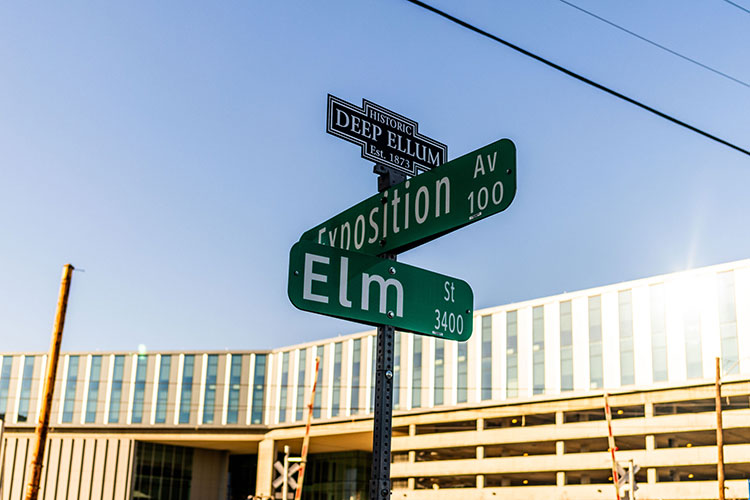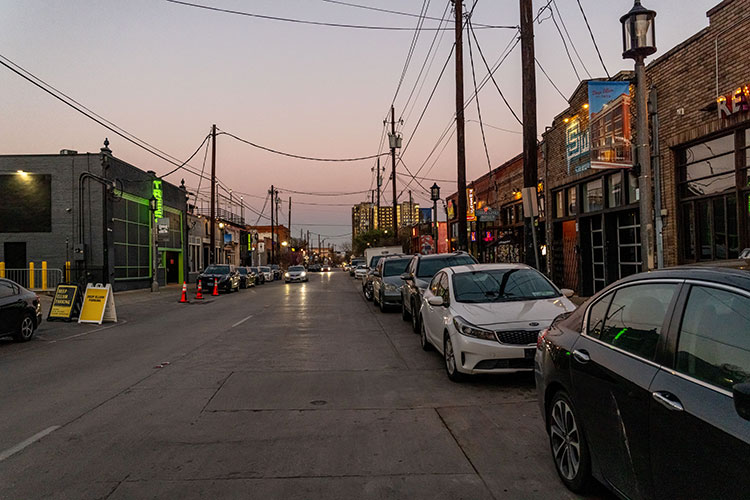History of Deep Ellum
The railroads created Deep Elm. The Houston and Texas Central (H&TC) Railroad arrived in Dallas in 1872, followed by the Texas and Pacific (T&P) Railroad in 1873. The crossing of the two lines is considered the birth of a community on the outer edge of downtown Dallas that people called Deep Elm.

The name Deep Ellum derives from the dialects of the people who worked there. At its heart, Deep Ellum was a place where the cultures of the world converged — Blacks, Jews, Greeks, Italians, Mexicans, Czechs, and others, fleeing the oppression of their homelands, looking for a better life.
The district boasts
over 20 historically recognized buildings.
Over the years Deep Ellum became a crossroads, a nexus, where just about anyone might interact and impact each other in relative freedom.
In its heyday Deep Ellum attracted a mix of people, from the architect William Sydney Pittman who designed the Pythian Temple which opened in 1916 on this site, to Jewish pawnbrokers, such as Rubin Goldstein, known as Honest Joe, who operated across the street, and countless numbers of aspiring musicians, including Lillian Glinn, Alex Moore, Bobbie Cadillac, Lead Belly, Hattie Hudson, Bob Wills, and Lolo Cavazos, as well as Blind Willie Johnson, Ida May Mack, the Shelton Brothers, and the Light Crust Doughboys. Most notably, in the mid-1920s, Blind Lemon Jefferson, who played for tips near the corner of Elm Street and Central Avenue, became the biggest selling downhome bluesman of his generation.
Deep Ellum was named a Cultural District by the State of Texas in 2020. The Deep Ellum Historic District encompasses the area bounded by the DART Green line to the north, South Hall Street to the south, I-345 to the west, and I-30 to the east. In 2023, the Deep Ellum Historic District joined the National Register of Historic Places in celebration of Deep Ellum’s 150th anniversary.

Deep Ellum Community Center
Step into the Deep Ellum Community Center—a welcoming destination for visitors offering tours, history exhibitions, and helpful resources like maps. Explore our permanent exhibit showcasing Deep Ellum’s rich history, along with rotating temporary exhibitions aimed at sparking public interest, education, and dialogue about our neighborhood’s profound impact on Dallas’s cultural scene.
Deep Ellum Archive
A partnership with The Dallas Public Library, The Deep Ellum Archive collects, organizes, and makes available to the public for research, learning, and exhibition the rich and varied history of Deep Ellum. This new dedicated archive features specific collections on the district’s murals, music history, and architectural development as well as in-depth oral stories of business owners, property owners, residents, artists, musicians and members of the community. The Deep Ellum Community Center will continuously feature rotating exhibits showcasing key pieces from this new Deep Ellum Archive.

